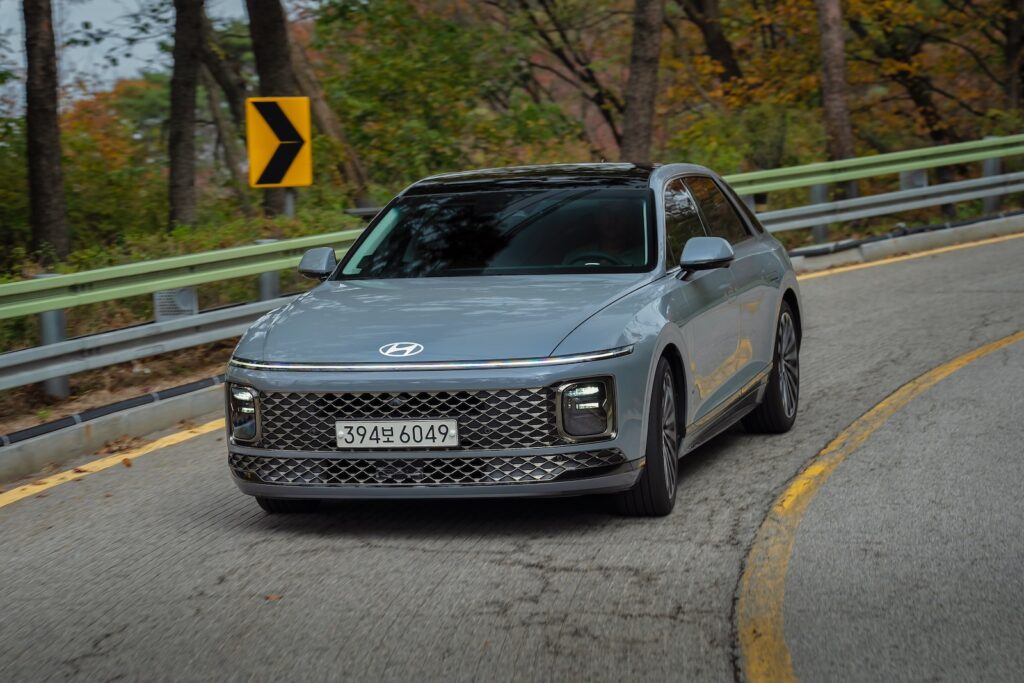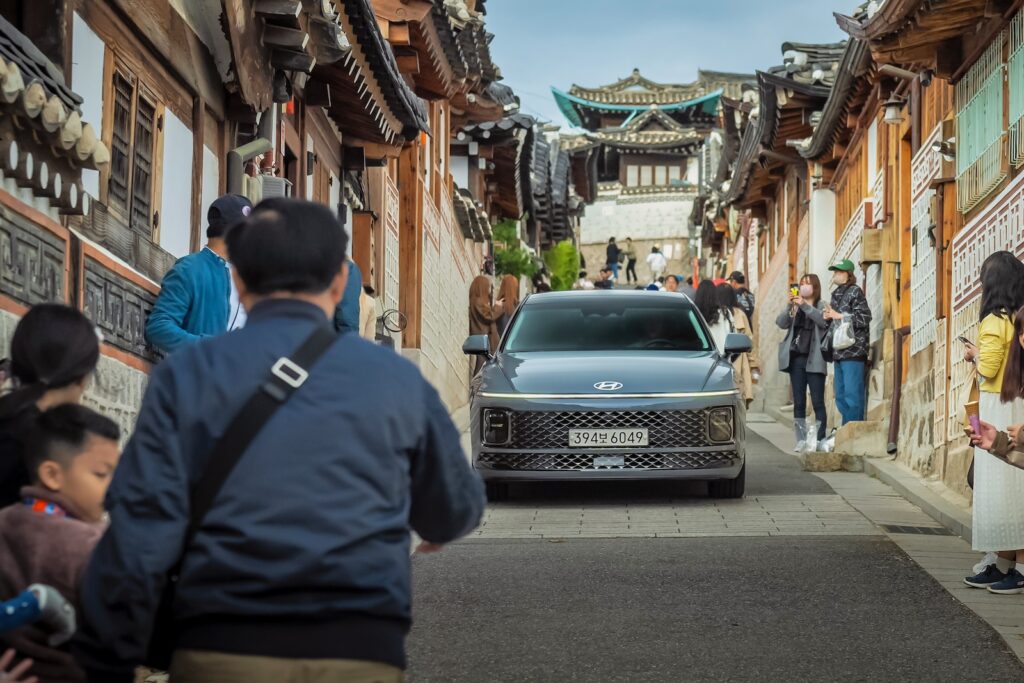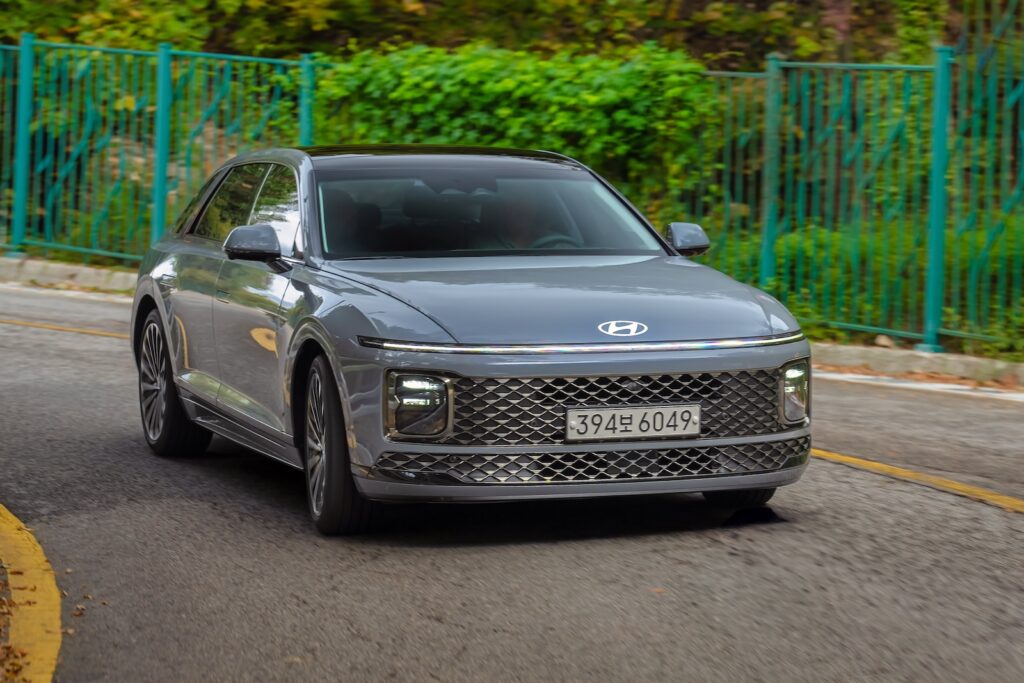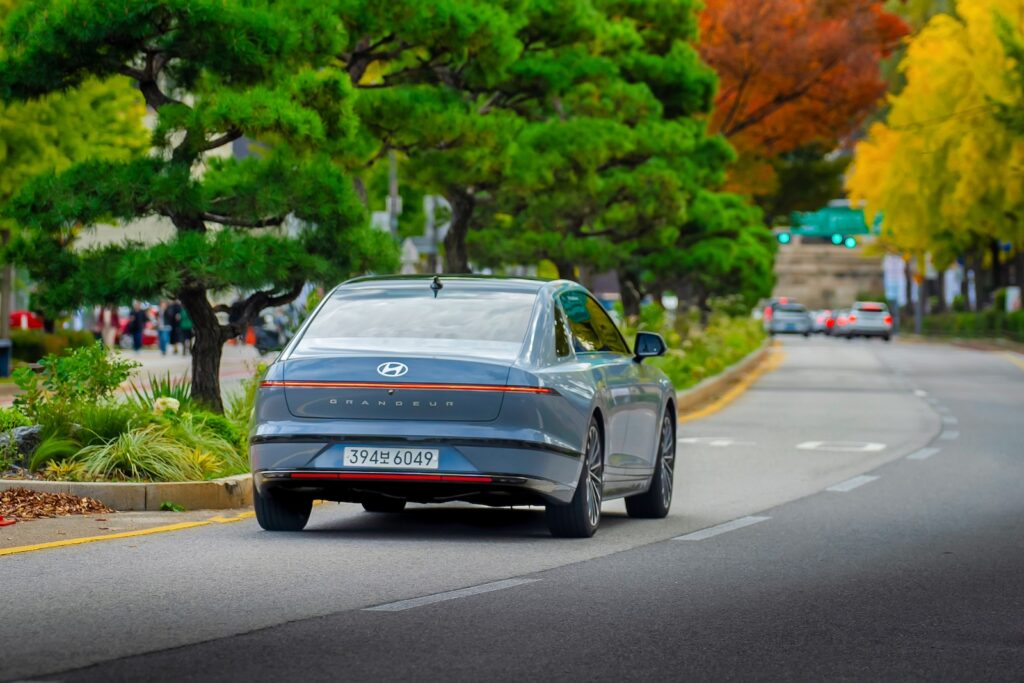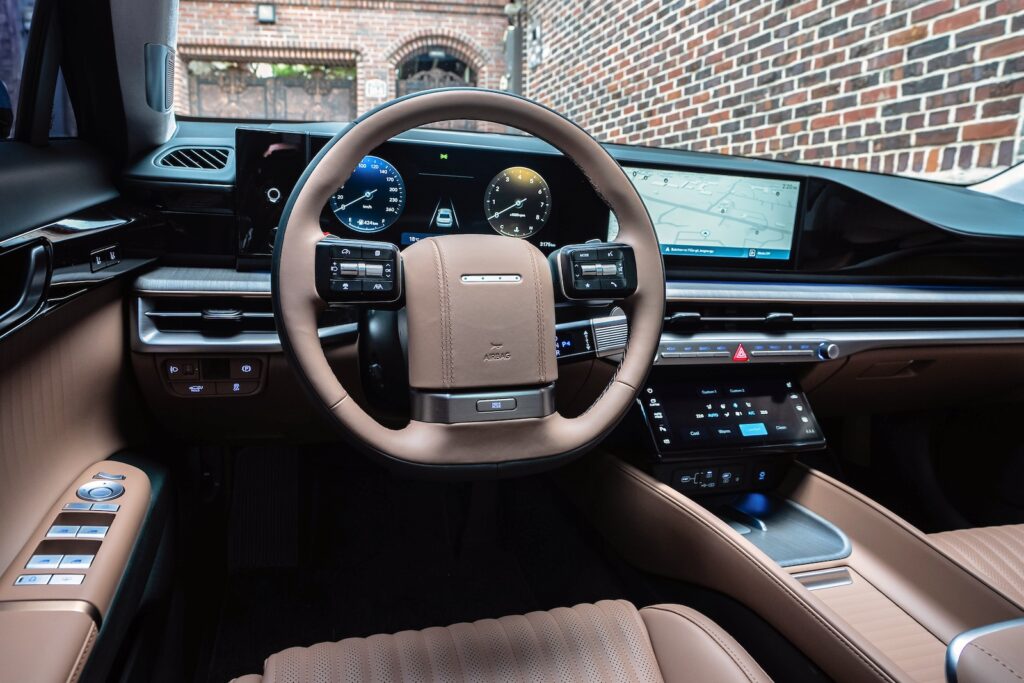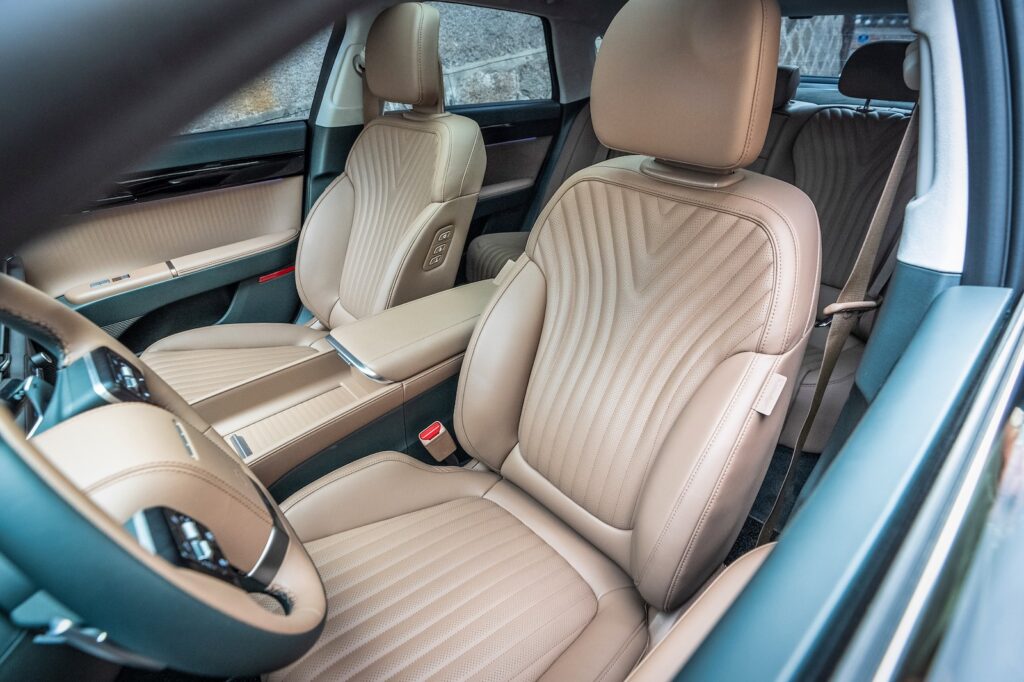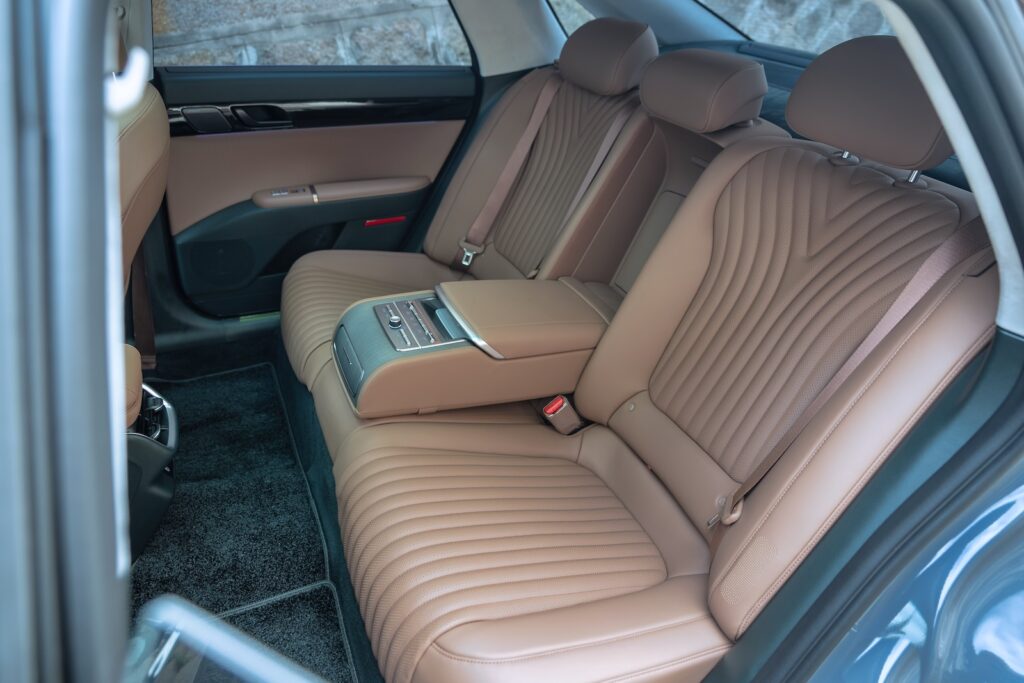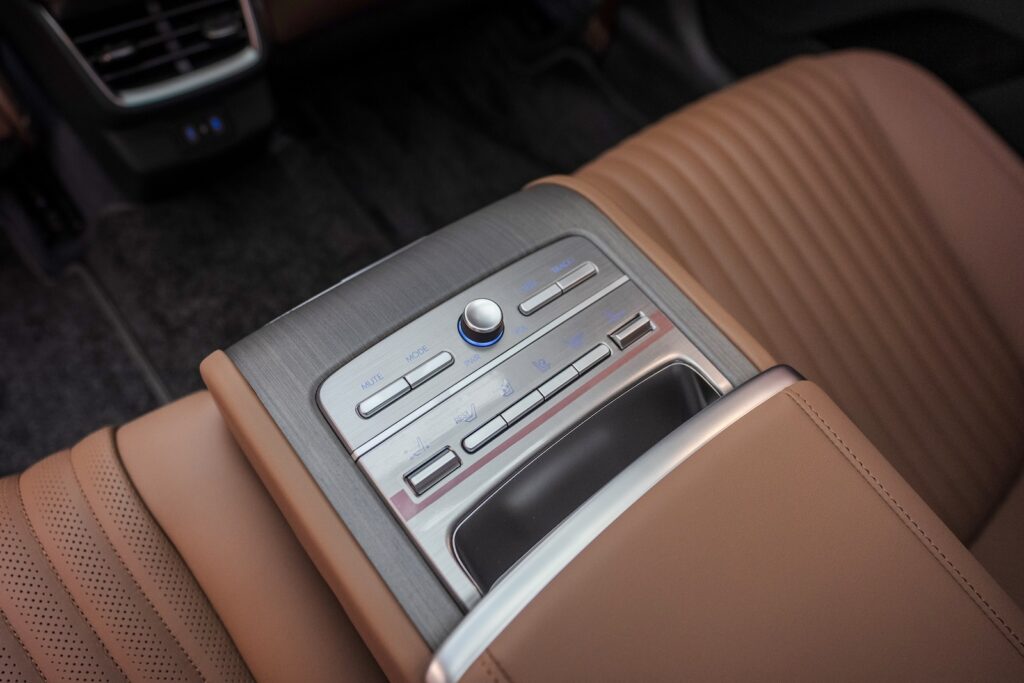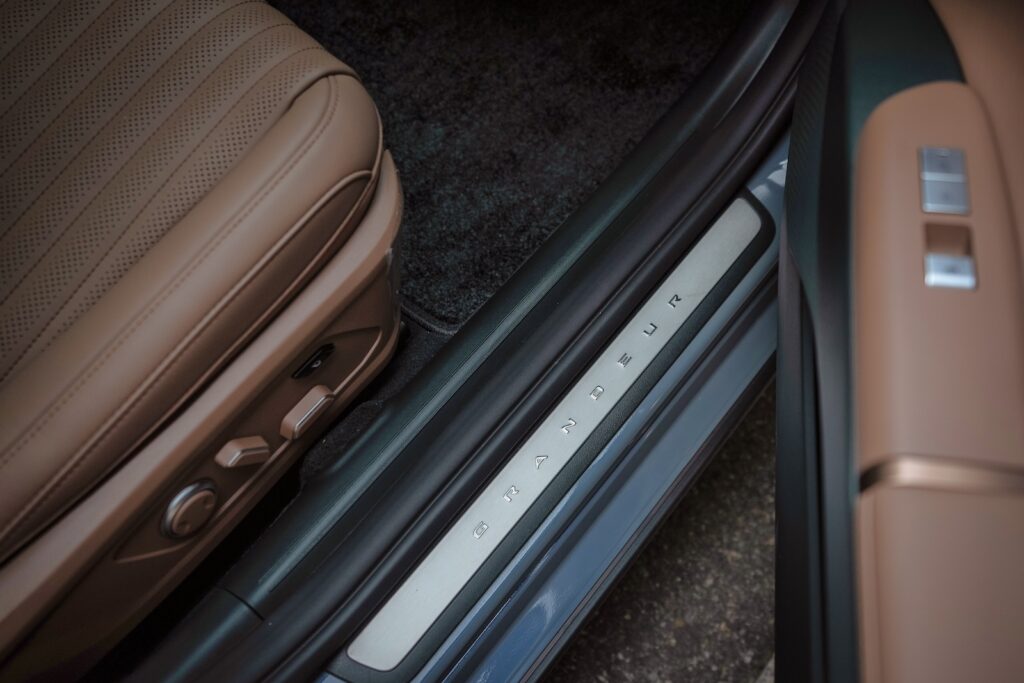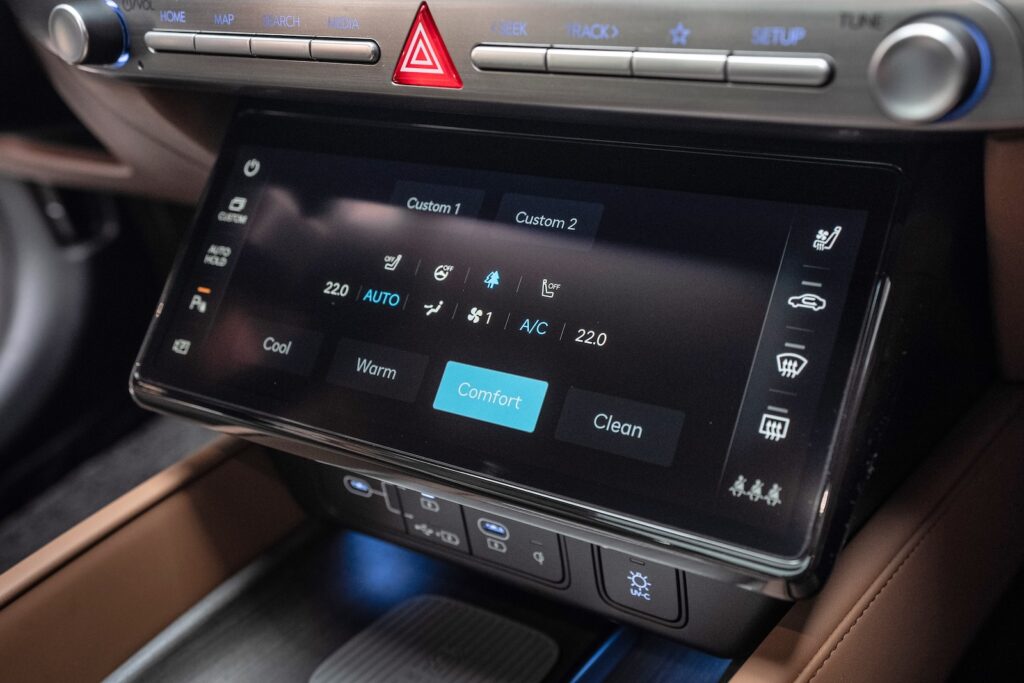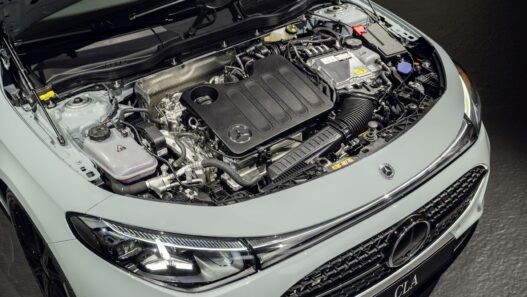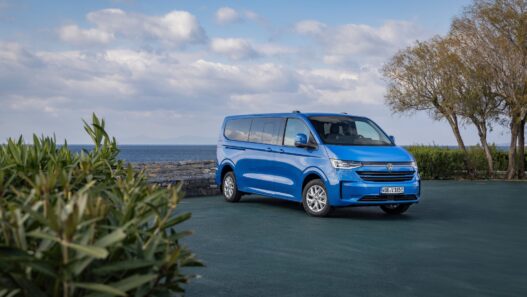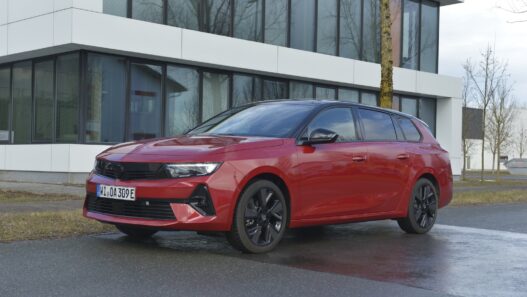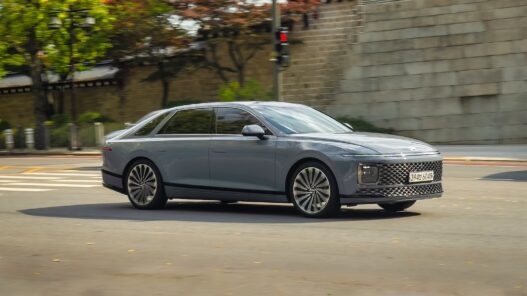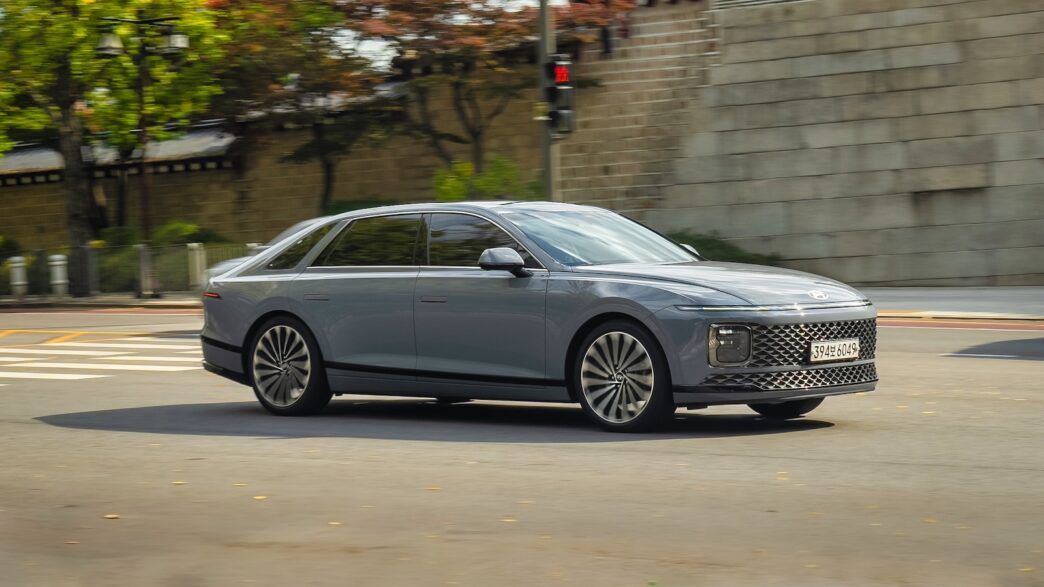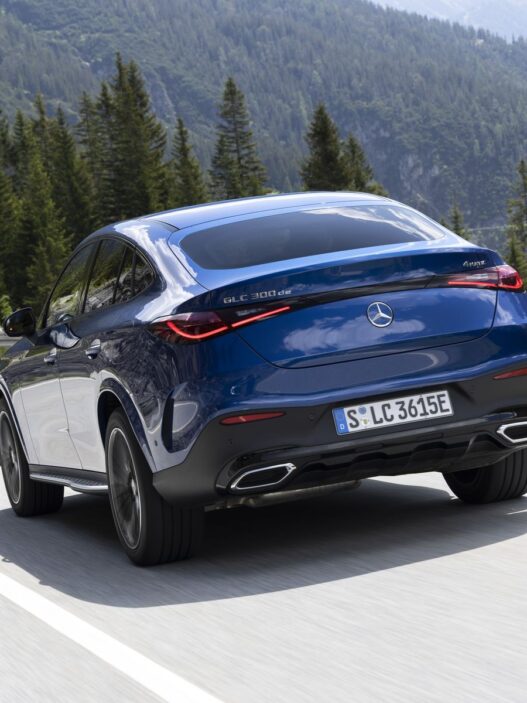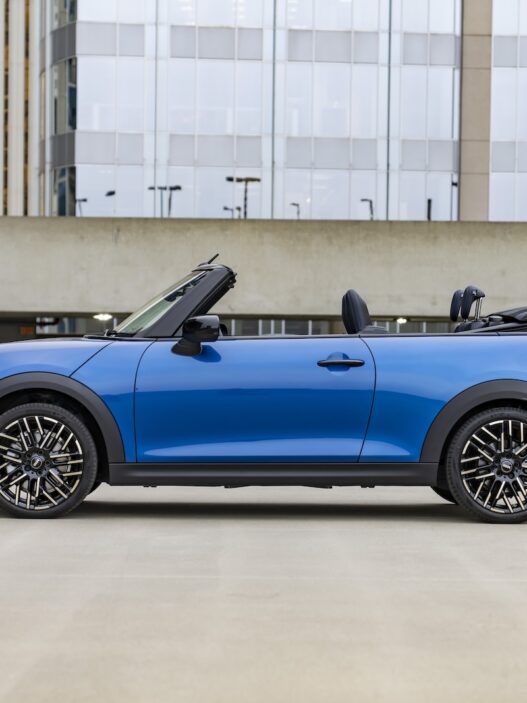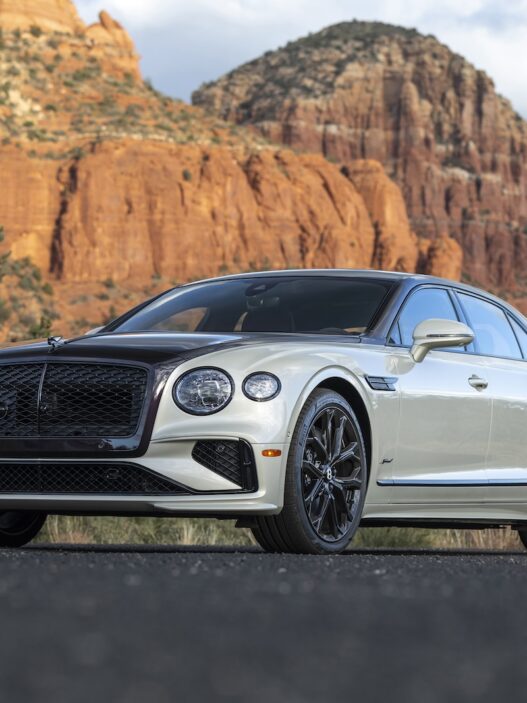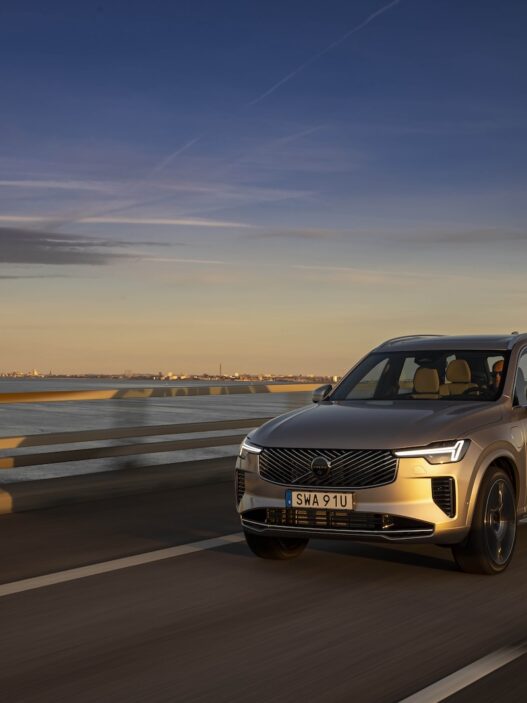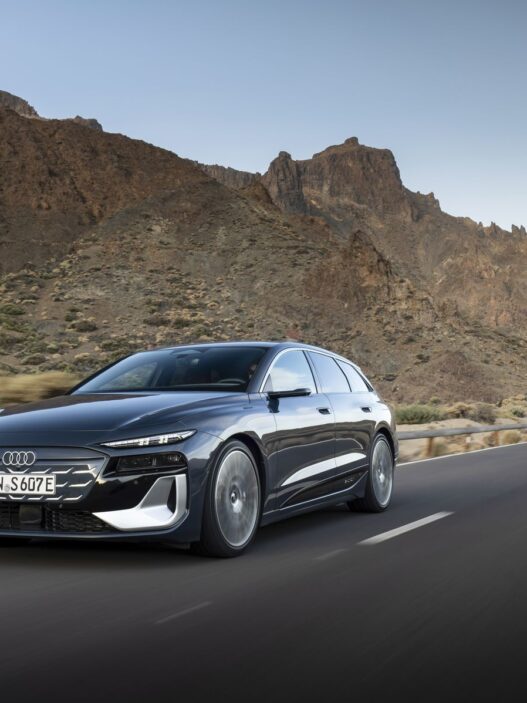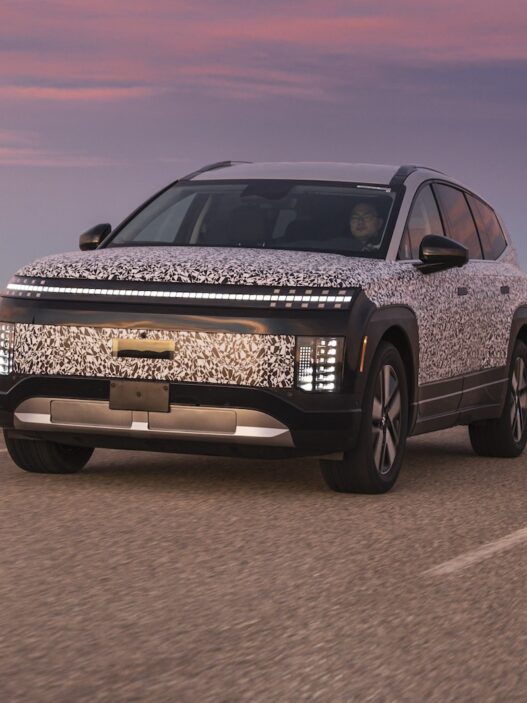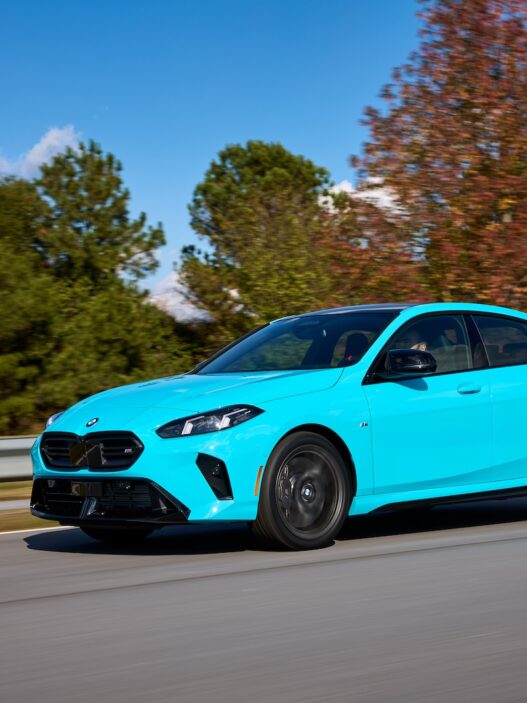Few cars are as quintessentially Korean as the Hyundai Grandeur. For years, this luxury sedan has been a dominant force on South Korea’s roads, outselling even global icons like the BMW 5 Series and Mercedes E-Class. We took the Grandeur for a spin around Seoul to see what makes it the country’s most beloved car.
A Design That Commands Attention
In a city where SUVs are less dominant and electric vehicles are still catching on, sedans reign supreme, with Hyundai, Kia, and Genesis leading the charge. Despite strong competition from German automakers, the Grandeur holds its own, with over 113,000 units sold last year alone. Its bold front fascia, complete with low-slung LED headlights, aligns with Hyundai’s signature design language. At the rear, a sleek LED light bar draws attention, while the gracefully tapering C-/D-pillar gives the car an elegant silhouette.
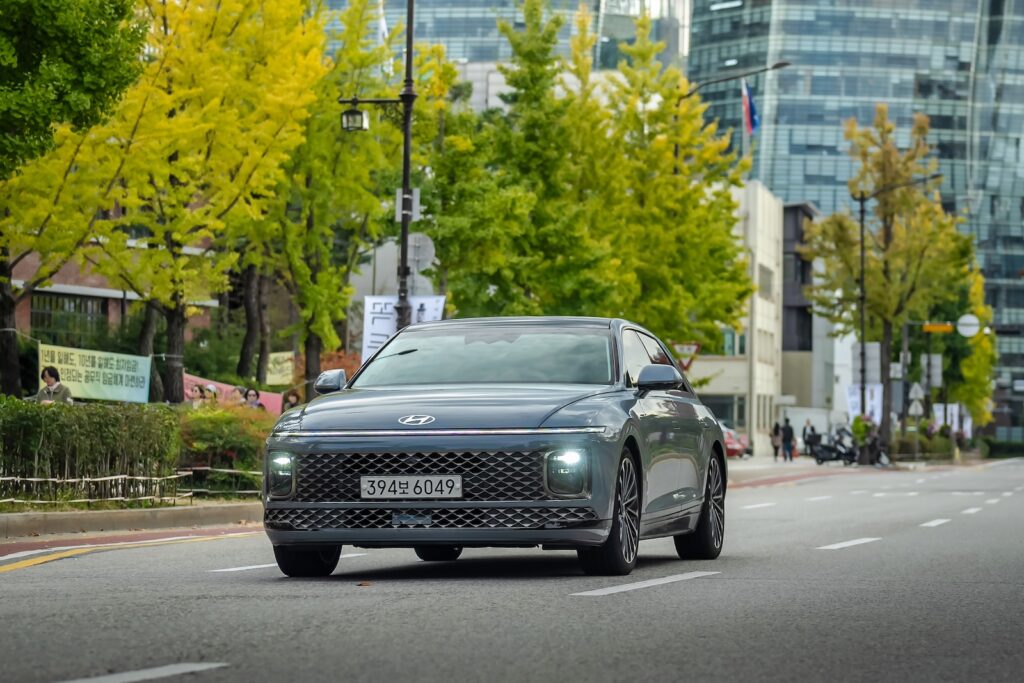
Modern convenience is everywhere: the door handles extend automatically when the driver approaches, and the smartphone in your pocket doubles as the key. The Grandeur oozes sophistication, blending modernity with comfort.
Luxurious Interior Meets High-Tech Features
Step inside, and the Grandeur impresses with its blend of elegance and cutting-edge technology. The driver’s view is dominated by three large screens: one for the instrument cluster, another for navigation and infotainment, and a lower touchscreen for climate control—reminiscent of the Audi A8. Below the continuous air vent strip are quick-access buttons for frequently used functions.
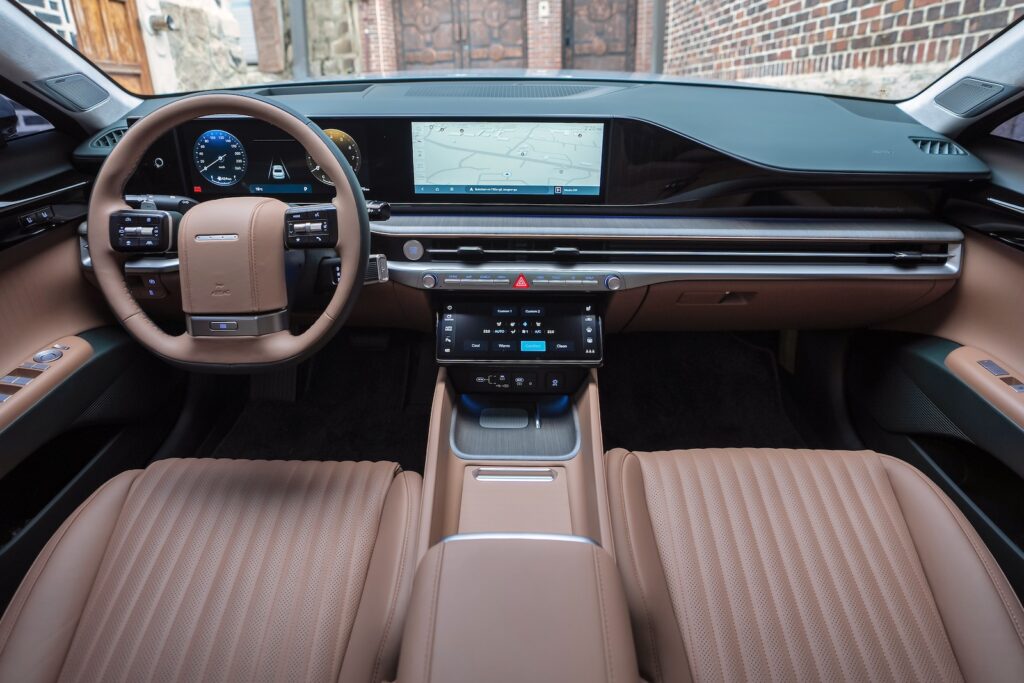
Passenger comfort is paramount, with ventilated seats in both rows, a massage function for the front seats, and a relaxing recline mode. Rear passengers can enjoy the electric sunshades and panoramic sunroof for a premium experience. Whether stuck in Seoul’s notorious traffic or cruising the open road, the Grandeur ensures a first-class ride.
The Heart of the Grandeur: A Versatile Engine Lineup
The Grandeur offers an array of powertrains to suit diverse needs. The lineup starts with a 1.6-liter turbocharged four-cylinder hybrid producing 169 kW (230 hp) and 350 Nm of torque. A naturally aspirated 2.5-liter four-cylinder (198 hp) and a 3.5-liter V6 (300 hp) cater to those seeking more power. For select markets, a 240-hp LPG-powered 3.5-liter V6 is also available. A plug-in hybrid is rumored to join the lineup, though a fully electric Grandeur isn’t on the horizon just yet.
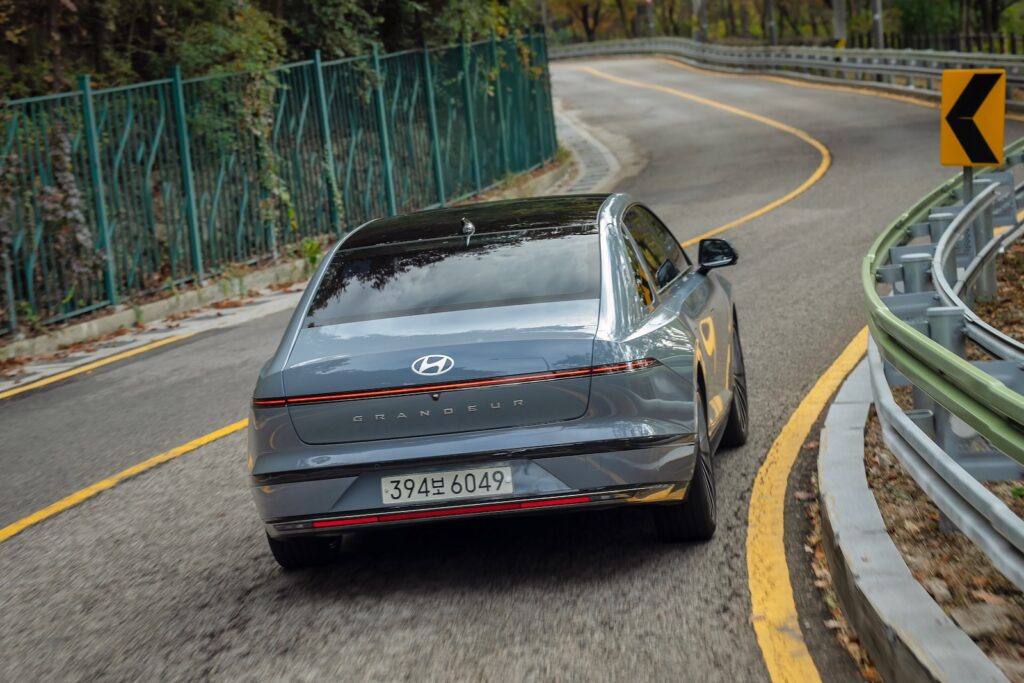
The hybrid version, featuring a 1.6-liter turbocharged engine paired with a 44-kW electric motor, is a bestseller. With 180 hp from the gasoline engine and an additional 60 hp from the motor, the setup offers seamless transitions between electric and combustion power. In South Korea’s stop-and-go traffic, the hybrid system’s efficiency is a major draw, offering a smooth, quiet ride.
Smooth Cruiser, Subtle Performer
On city streets, the Grandeur excels at blending into traffic with quiet confidence. The transitions between electric and gasoline power are almost imperceptible. On highways, the hybrid system delivers a respectable punch, though the engine’s 1.6-liter displacement means it lacks the throaty growl typically associated with luxury sedans.
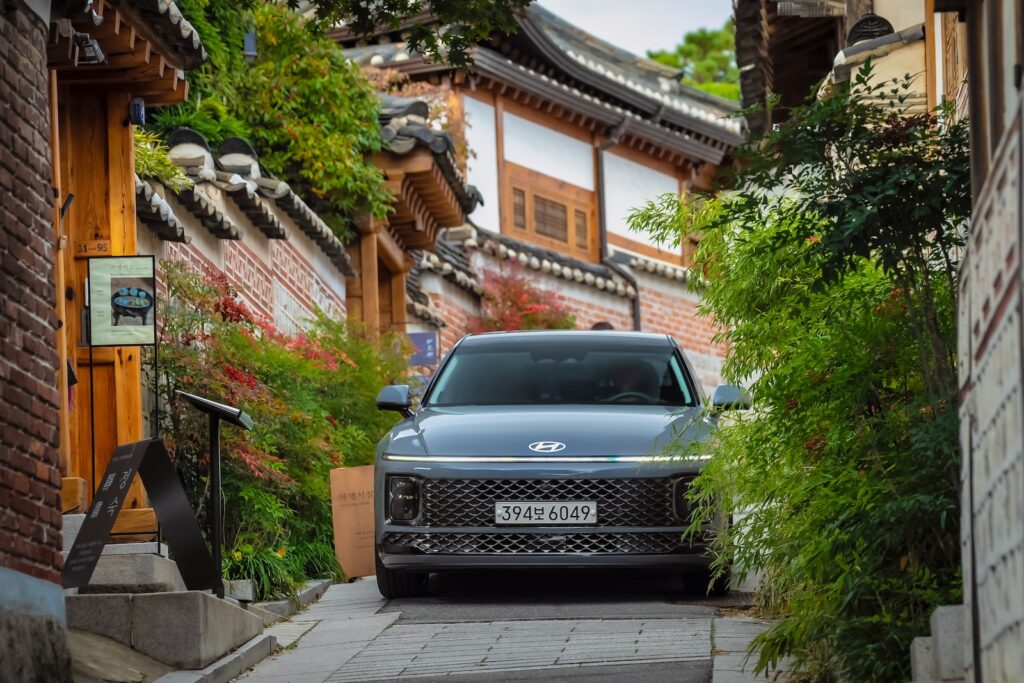
The battery, tucked beneath the trunk floor, slightly reduces cargo space to 480 liters. The suspension, with McPherson struts up front and a multi-link setup at the rear, soaks up bumps effortlessly, especially with the 19-inch wheels. The refined cabin, featuring noise-dampening glass, ensures a serene driving experience. Trim levels like Premium, Exclusive, and Calligraphy offer options like rich Nappa leather in a sophisticated Indigo-Brown hue.
The Grandeur’s Winning Formula
Starting at just 37,800,000 KRW (approximately €26,000) in its home market, even a fully loaded Grandeur barely exceeds €31,000. For a car that blends luxury, practicality, and cutting-edge technology, it’s no surprise that it’s a runaway success in South Korea. Given its specs and price, the Grandeur would likely find a receptive audience in Europe as well.
Technical Data: Hyundai Grandeur 1.6 T-GDI Hybrid
- Engine: 1.6L turbocharged inline-four with hybrid module
- Power: 169 kW / 230 hp
- Torque: 350 Nm
- Top Speed: 220 km/h
- Fuel Consumption: 5.5–6.4 L/100 km (88 g CO2/km)
- Drivetrain: Front-wheel drive
- Transmission: 6-speed automatic
- Curb Weight: 1,785 kg
- Cargo Space: 480 liters
